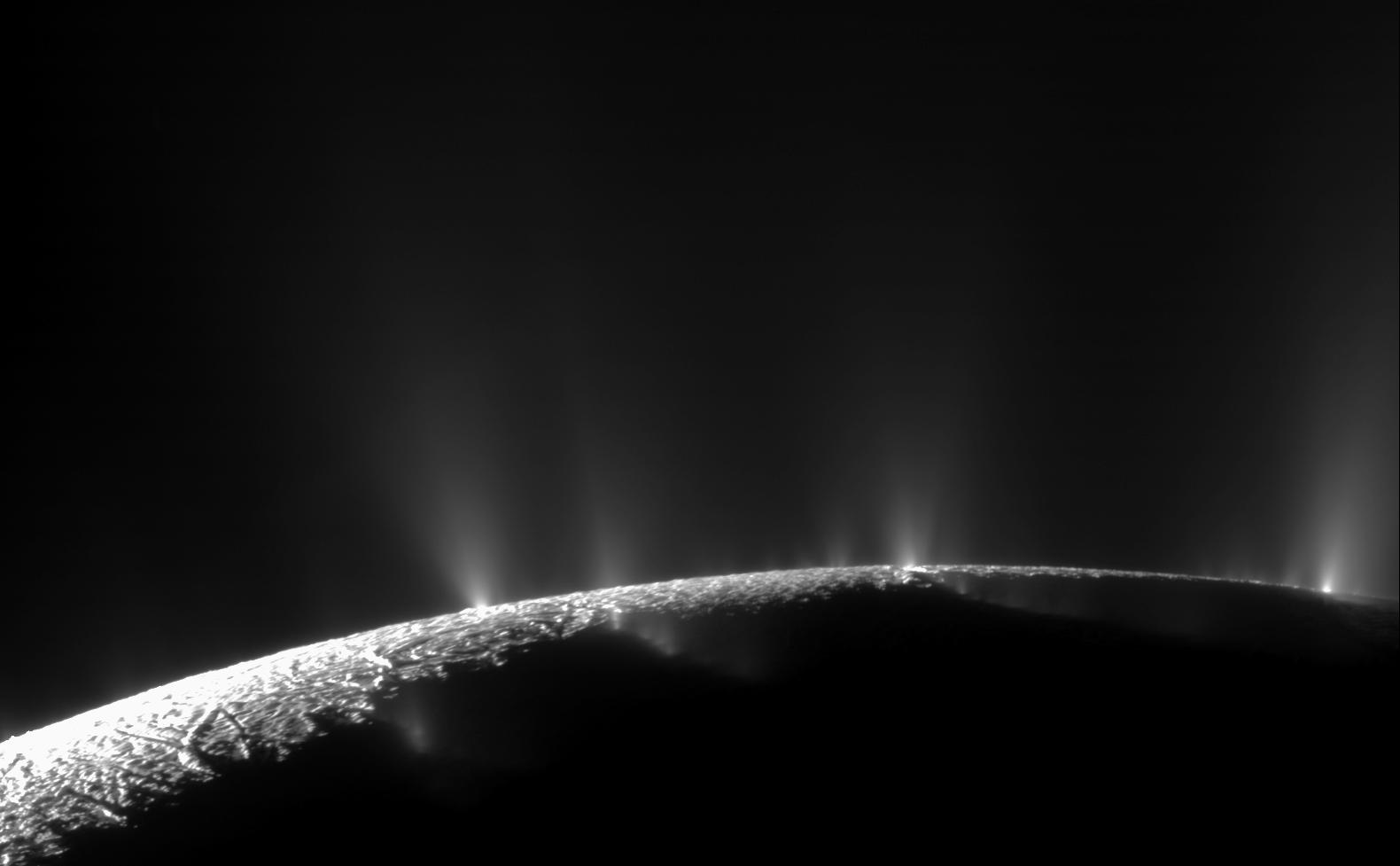4 min read
Cassini is orbiting Saturn with a 31.9-day period in a plane now inclined 46.5 degrees from the planet's equatorial plane. The most recent spacecraft tracking and telemetry data were obtained on June 19 using the 70-meter diameter Deep Space Network station at Canberra, Australia. Except for the science instrument issues described in previous reports (for more information search the Cassini website for "CAPS" and "USO"), the spacecraft continues to be in an excellent state of health with all of its subsystems operating normally. Information on the present position of the Cassini spacecraft may be found on "Eyes on the Solar System".
This week Cassini picked up speed while falling inward toward periapsis in its Saturn orbit, then whipping around toward Saturn's largest satellite Titan for the T-102 encounter on Wednesday of the following week.
Wednesday, June 11 (DOY 162)
The Ultraviolet Imaging Spectrograph (UVIS) maintained control of the spacecraft's pointing throughout the day, finishing up a 37-hour long observation of Saturn's northern auroral region. The Composite Infrared Spectrometer (CIRS) and the Visible and Infrared Mapping Spectrometer (VIMS) took advantage of the pointing to make observations in ride-along mode.
Images of Saturn's distant, retrograde moon Phoebe were featured which recall Cassini's first encounter upon entering the Saturnian system 10 years ago today:
/resources/16035
Thursday, June 12 (DOY 163)
After the aurora observations wrapped up, Cassini turned its high-gain antenna dish to track Earth (this was one of six such occasions this week). The 70 meter diameter Deep Space Network (DSN) dish in Australia maintained a routine communications and tracking link with Cassini for eight and one-quarter hours. At the same time, the DSN station participated in an operations readiness test in preparation for two kinds of Radio Science experiments that will execute in real time during the T-102 Titan encounter on Wednesday. These experiments are the subject of a news feature:
http://saturn.jpl.nasa.gov/news/cassinifeatures/feature20140617/
When the spacecraft turned away form Earth, it pointed the Imaging Science Subsystem's telescopes to Saturn's irregular moon Erriapus. This very dark object has a diameter of about eight kilometers, and occupies an inclined orbit that reaches just over 17 million kilometers from Saturn. The spacecraft rotated slowly so ISS could track the object for 13.5 hours. UVIS rode along taking data.
Friday, June 13 (DOY 164)
UVIS was again responsible for pointing, this time looking at part of the upper reaches of Saturn's atmosphere known as the thermosphere. This observation will help characterize the density in a region where Cassini is planning to fly beginning in April 2017, when its orbits will bring it through the narrow space in between rings and atmosphere. This observation lasted 13.5 hours.
Laboratory experiments have matched the infrared spectral signature of a material in Titan's atmosphere that has previously remained unidentified.
Saturday, June 14 (DOY 165)
ISS observed distant Erriapus again today for 14.75 hours, with UVIS again riding along.
Sunday, June 15 (DOY 166)
Orbit Trim Maneuver (OTM)-382, the T-102 approach maneuver, was executed by realtime command today. The maneuver had the spacecraft turn and fire its small rocket thrusters for 23 seconds, providing the desired change in velocity of 28 millimeters per second.
When the OTM concluded, UVIS stared at Saturn's south polar region for 15 hours to observe the aurora, while CIRS, ISS, and VIMS rode along. This observation was repeated on the next day, though for only 12.8 hours.
Monday, June 16 (DOY 167)
Cassini coasted through periapsis of its orbit #205 at a distance of about 750,000 kilometers above Saturn's cloud tops, going 30,930 kilometers per hour relative to the planet.
An image featured today shows ring particles and the 40 kilometer-long moon Atlas as they were moving into sunlight after having chilled briefly in Saturn's shadow (Atlas completes an orbit around Saturn every 14.4 hours):
/resources/16039 .
Tuesday, June 17 (DOY 168)
Almost all (CIRS, ISS and VIMS) of Cassini's telescopes began tracking Saturn's giant satellite Titan for the T-102 encounter. The clouded moon loomed within 270,000 kilometers from the spacecraft by day's end, much less than the distance from Earth to our Moon. Titan would grow larger still while Cassini carried out observations of many kinds as the encounter activities continued. Closest approach the next day would be at an altitude of 3,658.6 kilometers above the surface. Although this was not one of Cassini's closest encounters with Titan, it was designed for carrying out Radio Science observations of Titan's surface and atmosphere using two Australian DSN stations in real time. The Titan T-102 Encounter page has details:
http://saturn.jpl.nasa.gov/mission/flybys/titan20140618 .







